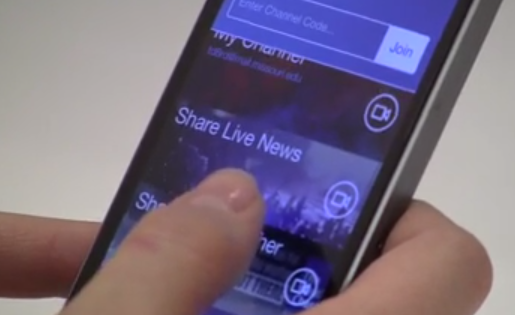This week we explore some ideas for advancing journalistic video via automated production, live-streamed user-generated footage, and thoughtful storytelling.
PART 1: Automated production via Wochit
Wochit is a cloud-based video creation platform that automates much of the process of creating story packages — complete with scripted narration — related to breaking news or online trends. We find out how it works from Drew Berkowitz, senior vice president, partnerships.
Reporting by Tatiana Darie.
[To skip directly to this segment in YouTube, click here.]
Additional information:
Wochit offers content libraries from partners such as Getty Images, The Associated Press, Reuters and Agence France-Presse. Publishers already using Wochit include Hearst, E.W. Scripps, Warner Music Group, Elle magazine and The Times of India.
PART 2: Streaming UGC via Stringwire
Stringwire aggregates live eyewitness video streams from mobile devices and pushes the footage directly to TV control rooms or websites. We hear how the tool is contributing to breaking news coverage from Phil Groman, Stringwire product lead at NBC News.
Reporting by Tatiana Darie.
[To skip directly to this segment in YouTube, click here.]
PART 3: Video storytelling at The New York Times
While many newsrooms are trying to find the right formula for successful Web video, New York Times video journalist A.J. Chavar says the solution might be as simple as just telling good stories.
Reporting by Tatiana Darie, Rachel Wise and Reuben Stern.
[To skip directly to this segment in YouTube, click here.]
A few interesting categories of video from the The New York Times:
- Op-Docs – Many of the more innovative videos appear in the Op-Docs section, a collection of “short, opinionated documentaries, produced by independent filmmakers and artists with wide creative latitude.”
- Times Minute -Short reports and analysis on national and global stories from the Times newsroom. Although billed as a minute, most of them are longer than that.
- Retro Report – A series of documentary-style videos that explore events from the past, with new information.
- The Last Word – In-depth interviews with famous subjects that are not published until after the person’s death.
- App Smart – Each video offers recommendations and demos of mobile apps related to a specific topic or theme.
- Anatomy of a Scene – Single scenes from recently released motion picture films that include director audio explanation/commentary.
- Modern Love – A series of animated films based on the regularly appearing column about relationships.
Additional examples can be found by visiting the main video page on The New York Times website.
Reuben Stern is the deputy director of the Futures Lab at the Reynolds Journalism Institute and host and co-producer of the weekly Futures Lab video update.
 The Reynolds Journalism Institute’s Futures Lab video update features a roundup of fresh ideas, techniques and developments to help spark innovation and change in newsrooms across all media platforms. Visit the RJI website for the full archive of Futures Lab videos, or download the iPad app to watch the show wherever you go. You can also sign up to receive email notification of each new episode.
The Reynolds Journalism Institute’s Futures Lab video update features a roundup of fresh ideas, techniques and developments to help spark innovation and change in newsrooms across all media platforms. Visit the RJI website for the full archive of Futures Lab videos, or download the iPad app to watch the show wherever you go. You can also sign up to receive email notification of each new episode.

